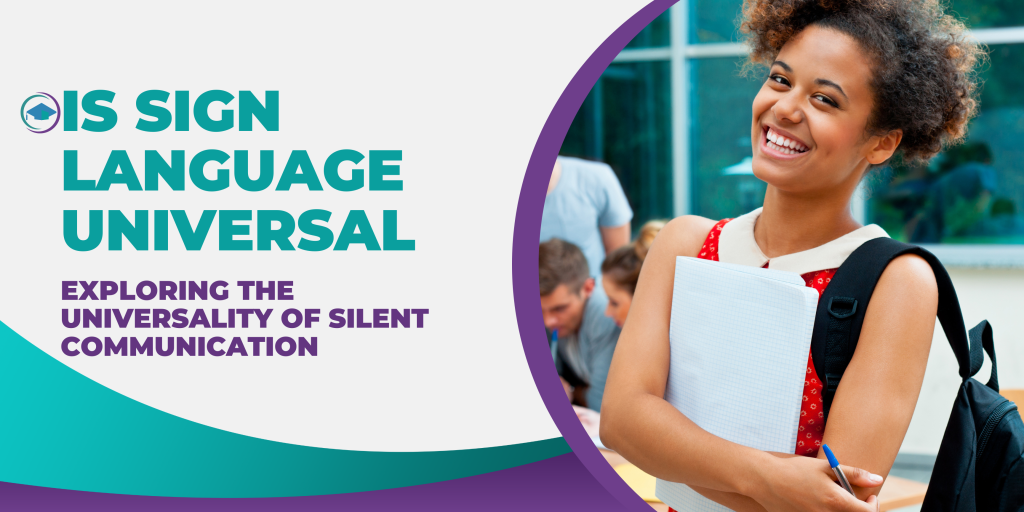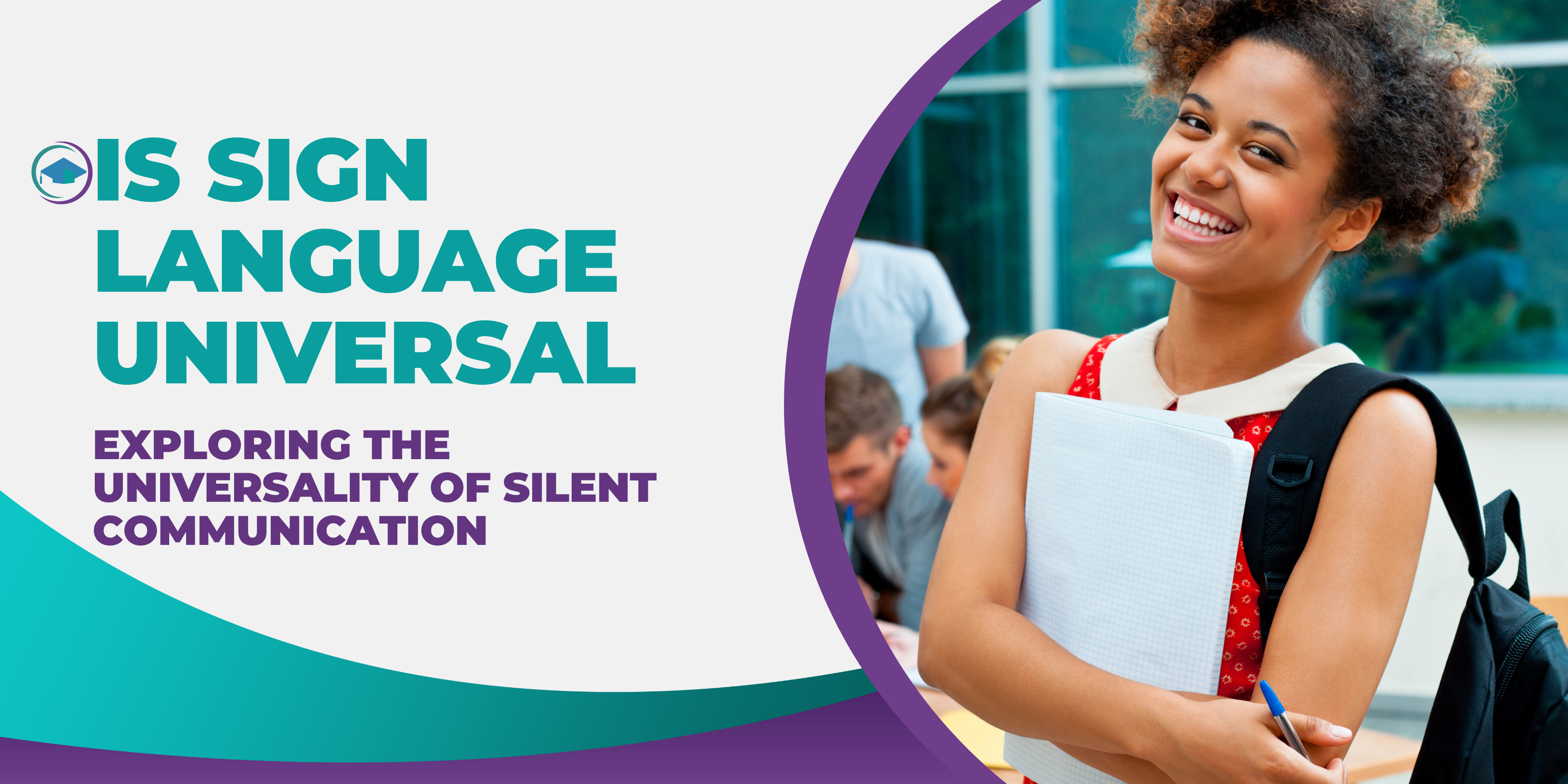Is Sign Language Universal: Sign language is a powerful and significant mode of communication, primarily used by deaf individuals to express their thoughts, emotions, and ideas.
This article aims to delve into the research question of whether sign language is universal, exploring its global reach and impact.
If You Have Any Questions About Is Sign Language Universal Comment Below.
Is Sign Language Universal

Understanding Sign Language | Is Sign Language Universal
Definition and history of sign language
- Sign language is a complex system of communication that utilizes hand movements, gestures, facial expressions, and body language to convey meaning.
- Its origins can be traced back to early civilizations, evolving separately from spoken languages.
Different sign language systems around the world
- Various sign languages exist globally, each with its own linguistic rules, vocabulary, and grammar.
- American Sign Language (ASL), British Sign Language (BSL), and Australian Sign Language (Auslan) are just a few examples of distinct sign language systems used in different regions.
Importance of signing as a form of communication
- Sign language plays a pivotal role in the lives of deaf individuals, facilitating effective communication and fostering a sense of belonging within the deaf community.
- It provides a means of expression, access to information, and the ability to engage in various social, educational, and professional settings.
The Cultural and Linguistic Aspects of Sign Language | Is Sign Language Universal
Unique features and grammar of sign languages
- Sign languages possess unique features and grammar systems that distinguish them from spoken languages.
- Instead of relying solely on audible sounds, sign languages utilize visual elements, spatial relationships, and movement to convey meaning.
Cultural influences on sign language development
- Cultural factors significantly impact the development and evolution of sign languages.
- Each deaf community contributes to the creation of its own sign language, reflecting the cultural values, experiences, and shared history of its members.
Bilingualism and code-switching in signed languages
- Many individuals who use sign language employ a form of bilingualism, incorporating both sign language and spoken language interchangeably.
- Code-switching, the seamless transition between sign language and spoken language, allows for effective communication in diverse environments.
Investigating Universality | Is Sign Language Universal
Scope of universality: Is sign language recognized globally?
- While sign languages vary across different regions, they are universally recognized as legitimate languages capable of conveying complex information.
- Recognizing the universality of sign languages paves the way for promoting linguistic inclusivity and accommodating diverse communication needs.
Comparative analysis of common sign language features
- Analyzing sign languages from different countries reveals similarities in the use of gestures, facial expressions, and motion patterns.
- These shared features suggest underlying universal language principles at play in sign languages worldwide.
Case studies: Examining similarities and differences between sign languages
- In-depth examination of specific sign languages through case studies allows for a deeper understanding of how sign languages evolve and adapt to their respective cultural contexts.
- Comparing similarities and differences between sign languages enhances our comprehension of the universality or distinctiveness of sign languages.
Biological and Neurological Perspectives | Is Sign Language Universal
Correlations between sign language and brain structure
- Studies have demonstrated that learning and using sign language can cause structural changes in various brain regions.
- This suggests that sign languages engage neural networks and processes different from those associated with spoken languages.
Implications for linguistic universality and cognitive processes
- Sign language provides valuable insights into the universality of cognitive processes underlying language acquisition and production.
- Comparing signed and spoken languages helps us understand the diversity and flexibility of human communication abilities.
Studies on the genetic basis of sign language acquisition
- Research exploring the genetic factors influencing sign language acquisition has shed light on the interplay between biological and environmental factors.
- Genetic variations may contribute to individual differences in signing proficiency and language development among deaf individuals.
Cross-cultural Communication and Sign Language | Is Sign Language Universal
Challenges faced by deaf individuals in different cultures
- Deaf individuals encounter unique challenges related to communication and social inclusion in various cultural contexts.
- Differences in attitudes, societal norms, and access to resources can impact the experiences of deaf individuals in different regions.
Efforts towards bridging the communication gap
- Numerous organizations and initiatives are dedicated to bridging the communication gap between deaf individuals and the hearing world.
- These efforts aim to promote understanding, awareness, and accessibility to sign language as a means of fostering inclusivity.
Role of sign language interpretation in international settings
- Sign language interpretation plays a crucial role in facilitating effective communication between deaf individuals and the broader society.
- In international settings, sign language interpreters enable cross-cultural exchanges and ensure equitable access to information.
Sign Language in Education and Accessibility | Is Sign Language Universal
Sign language in inclusive education systems
- Integrating sign language into education systems is essential for ensuring equal opportunities for deaf students.
- Inclusive education that acknowledges and incorporates sign language fosters academic success, social development, and self-empowerment.
Benefits and challenges of language accessibility for the deaf community
- Accessible language, primarily sign language, enriches the lives of deaf individuals, connecting them to culture, knowledge, and social interactions.
- However, barriers such as limited resources, societal attitudes, and a lack of recognition pose challenges to sign language accessibility.
Sign language as a tool for empowerment and social integration
- Sign language not only serves as a means of communication but also empowers deaf individuals to express their identities and participate fully in society.
- Recognizing and supporting sign languages can lead to greater inclusion, acceptance, and social integration.
Technological Advancements in Sign Language | Is Sign Language Universal
Innovations in sign language recognition and translation
- Advancements in technology have led to the development of sign language recognition systems that can translate sign language into written or spoken language.
- These innovations enhance accessibility and promote better communication between deaf and hearing individuals.
Impacts of technology on sign language communities
- Technology has brought numerous benefits to sign language communities, including improved access to information, increased social connections, and expanded educational opportunities.
- However, it is crucial to ensure that technological solutions are inclusive and developed in collaboration with the deaf community.
Future possibilities for enhancing sign language communication
- The future holds exciting possibilities for further enhancing sign language communication through emerging technologies.
- Continued innovation and research will contribute to bridging communication gaps and promoting inclusivity for deaf individuals.
Exploring Deaf Culture
Definition and characteristics of Deaf culture
- Deaf culture encompasses the shared beliefs, customs, traditions, and values of the deaf community.
- It is characterized by a strong sense of identity, pride, and linguistic diversity, centered around sign language.
Cultural norms and values within the Deaf community
- Within the Deaf community, cultural norms and values revolve around visual communication, human connection, and Deaf gain (the unique advantages of being deaf).
- Embracing these norms fosters a sense of belonging, resilience, and empowerment among deaf individuals.
Celebrating diversity and heritage through sign language
- Sign language serves as a vibrant expression of cultural diversity and heritage within the Deaf community.
- Celebrating and valuing different sign languages promotes cultural preservation, inclusivity, and appreciation of linguistic diversity.
Sign Language in Media and Entertainment
Portrayal and representation of sign language on screen
- The representation of sign language in media and entertainment plays a significant role in raising awareness and challenging stereotypes.
- Accurate and respectful portrayals of sign language contribute to greater acceptance, understanding, and respect for the Deaf community.
Impact of deaf actors and actresses in the film industry
- The inclusion of deaf actors and actresses in the film industry not only promotes authentic representation but also provides career opportunities and showcases the talent within the Deaf community.
- Their contributions challenge conventional perceptions and pave the way for greater diversity in the entertainment industry.
Promoting inclusivity through sign language performances
- Sign language performances, such as theater productions, poetry slams, and music concerts, are powerful platforms for promoting inclusivity and artistic expression.
- These performances provide an avenue for deaf individuals to share their stories, emotions, and creativity with wider audiences.
Challenges and Controversies in Sign Language
Debates surrounding sign languages as official languages
- Despite the recognition of sign languages as legitimate languages, debates persist regarding their official status.
- Advocacy is ongoing to ensure that sign languages are granted legal recognition, promoting equal rights and societal acceptance.
Stigmatization and discrimination against sign language users
- Stereotypes, misconceptions, and discriminatory practices contribute to the marginalization and inequality faced by sign language users.
- Raising awareness and challenging negative perceptions is crucial in creating a more inclusive society.
Advocacy for recognition and acceptance of sign languages
- Sign language advocacy movements strive to promote the rights, acceptance, and accessibility of sign languages on a global scale.
- By championing sign languages, they aim to challenge societal barriers, facilitate communication, and foster social inclusion.
The Future of Sign Language
Predictions and possibilities for the evolution of sign languages
- As society continues to evolve, sign languages may undergo further adaptations, incorporating new vocabulary, cultural references, and technological advancements.
- The future evolution of sign languages will be shaped by the dynamic nature of human communication needs.
Sign language preservation and revitalization efforts
- Efforts to preserve and revitalize endangered sign languages are crucial for safeguarding linguistic diversity and cultural heritage.
- Documenting, teaching, and promoting lesser-known or at-risk sign languages contribute to their continued existence and vitality.
Advancing societal attitudes and perceptions towards sign languages
- Shifting societal attitudes towards sign languages are vital for creating a more inclusive and equal society.
- By fostering greater awareness and understanding, societies can take steps towards embracing and valuing sign languages as integral elements of human diversity.
Conclusion Of Is Sign Language Universal
Recap of key findings on the universality of sign language
- Sign languages, although diverse, demonstrate remarkable similarities in their linguistic features, suggesting a universal aspect to silent communication.
- The universality of sign language highlights the importance of recognizing, respecting, and supporting sign languages as vital components of human communication.
Reflections on the importance of accepting and valuing sign languages globally
- Accepting and valuing sign languages on a global scale is essential for promoting equality, inclusion, and linguistic diversity.
- By embracing the universality of sign language, we foster a more inclusive and accessible world for all individuals, regardless of their hearing abilities.
FAQs About Is Sign Language Universal
Are sign languages visual representations of spoken languages?
- No, sign languages are fully developed languages in their own right, with unique grammar, syntax, and vocabulary. They are not direct visual representations of spoken languages.
Can anyone learn sign language?
- Yes, anyone can learn sign language. It is an inclusive and versatile mode of communication that can be beneficial for both deaf and hearing individuals, promoting inclusive communication and bridging linguistic barriers.
How do sign languages evolve and adapt to new concepts?
- Sign languages evolve and adapt through a dynamic process of concept creation and incorporation. New concepts are introduced through the creation of new signs or modifications of existing signs to adapt to changing societal needs and technological advancements.
What is the difference between sign languages and gestures?
- Sign languages are fully developed languages with complex grammatical structures and syntax used by deaf communities to communicate. Gestures, on the other hand, are simple hand movements used by hearing individuals for nonverbal communication and often lack the linguistic complexity of sign languages.
Is learning sign language beneficial for non-deaf individuals?
- Yes, learning sign language is beneficial for non-deaf individuals as it enhances communication skills, promotes inclusivity, and allows for greater understanding and appreciation of diverse cultures and communities.








